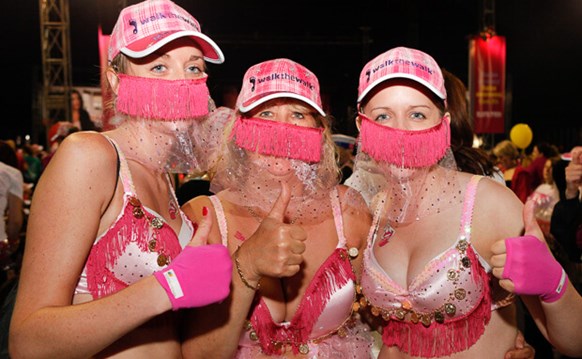Buying your Power Walking shoes for your breast cancer walk
Your ideal pair of power walking shoes is essential as you prepare for your charity marathon! Read our top tips to help you through your breast cancer walk
If you or someone you know has any symptoms that might be linked to breast or other cancers, don’t wait, visit your doctor now!
If you or someone you know has any symptoms that might be linked to breast or other cancers, don’t wait, visit your doctor now!
Your ideal pair of power walking shoes is essential as you prepare for your charity marathon! Read our top tips to help you through your breast cancer walk

The beauty of Power Walking is that you can do it anytime and anywhere. Whilst you may want to consider investing in a good pedometer and an all-weather jacket, the only essential equipment you will need is a good pair of walk-specific shoes suitable for Power Walking!
What is a walk-specific shoe?
Different sports place different demands on your feet and body, so just as you would buy football boots to play football, a walk-specific shoe is ideal for Power Walking.
Currently there is very little choice of Power Walking shoes in the UK, so by getting to know your feet, and by following this guide, you will be armed with enough information to find a shoe that is perfect for your feet and will get you through your training and to the Finish Line in comfort!
A good shoe will tick all these boxes and we suggest that if a walk-specific shoe is not available, the next best choice is a cross training shoe, or a Nordic walking shoe.
Avoid walking boots or any ankle-height boots as they will not allow your ankle to flex and after 26 miles on pavement this will be extremely uncomfortable.
N.B. MBT’s and similar types of shaping shoes, whilst comfortable for general walking are not suitable for Power Walking and will cause shin splints.
The angle of a Power Walker’s foot as it ‘pushes off’ is much greater than a runner. Consequently, look for a shoe with a low heel profile to avoid injuring your Achilles tendon – this area of the foot is incredibly delicate and needs to be protected.
If you pronate choose a shoe where the sole spreads out on the base of the heel. This makes it a little more difficult to roll onto the side of your heels.
The sole, or last as it is technically called, is the foundation of the ideal shoe. It should be wide enough for your foot width, with a sole that is thicker under the ball of the foot and slightly raised in the heel. It is important that both these areas are both supportive and really flexible, as they take quite a pounding.
Look for shoes that are partly made of supportive fabric such as Gore-Tex or leather, that will not stretch or relax too easily. Any shoes made of mesh fabric, typically running shoes, are not supportive enough for Power Walking.
Essential for giving your toes good protection for Power Walking from the thousands of times you will be using them to ‘push off’, from the back foot. Make sure this area is rounded enough for your toes to lie flat and to avoid any rubbing that can cause blisters and deep enough so that they can wiggle easily. Be sure to allow a 1 – 2 finger width of space from the end of your longest toe to allow for your foot to slide forward and expand as you walk. Expect your walking shoes to be approximately 1 full size larger than your normal shoes.
Thin socks, thick socks or double layer socks – it is only by trial and error that you find the ones that suit you. Once you have found the ideal pair be sure to wear them for training and on the day of your chosen challenge!
Never wear low cut socks or go barefoot, you will leave your feet prone to chafing, blisters and athlete’s foot.
Comments